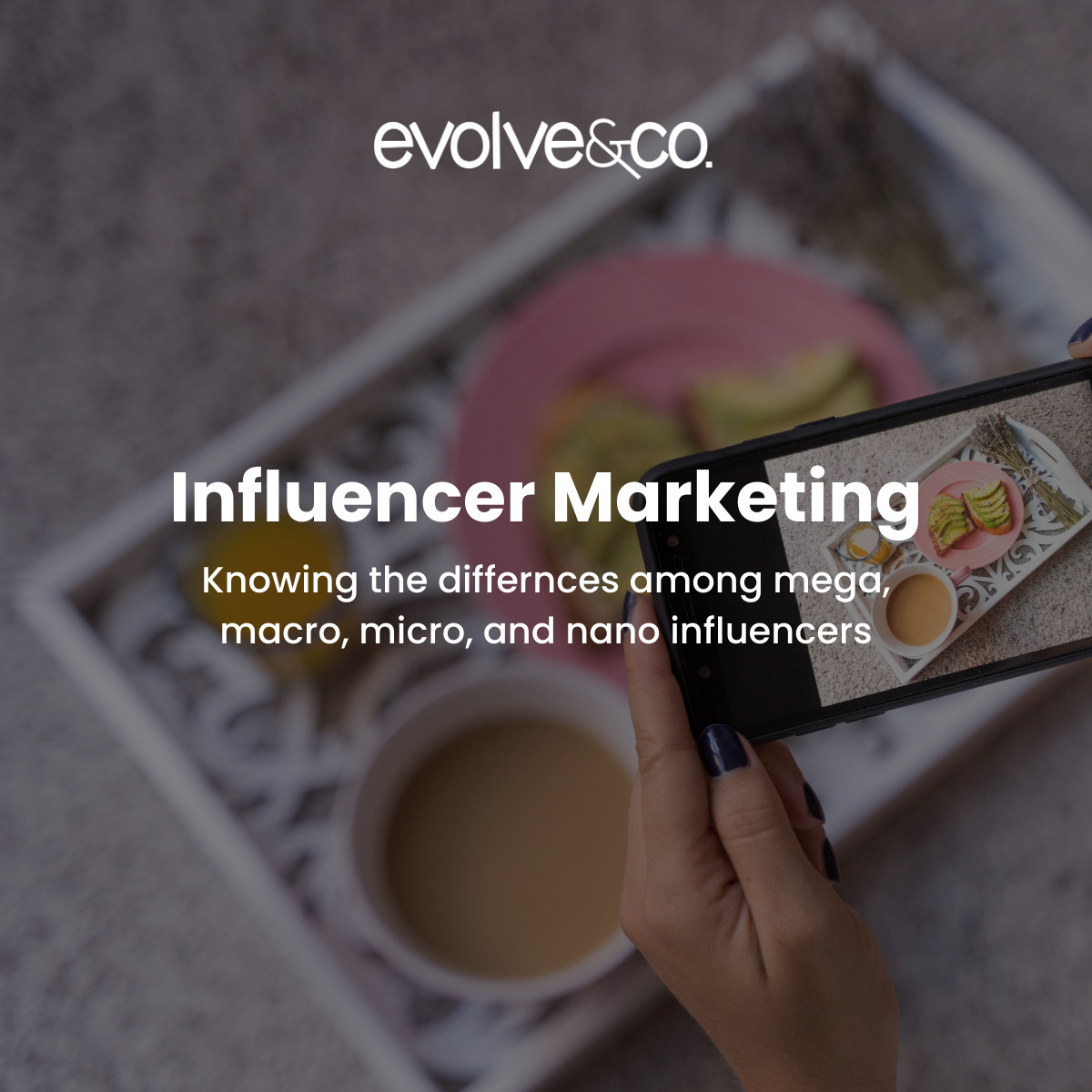What a day in age to be a part of.
Never has there been such abundance of opportunities and economic prosperity. It wasn’t too long ago that putting food on the table meant working full days in often dangerous conditions. Nowadays however, people can make an ample amount of money by simply taking photos and videos of themselves in the comfort of their own home.
These content creators are what marketers refer to as “influencers”, because of how they are able to impact such a large audience with seemingly minimal effort. Just a single click can instantly deliver media to the phones and computers of thousands — if not millions.
Photo by Mateus Campos Felipe
Influencers are taking over the digital marketplace, so the question is, how can businesses use them to their advantage?
A Million Dollar Industry
Adweek reports that 67% of businesses who have used influencer marketing believe that it helped them reach their target audience. But despite this rate of success, 41% of businesses using this marketing strategy devote less than 5% of their budget on it (Contestabile, 2018). Although influencers offer a legitimate strategy for marketing, it remains underrated.
Business Insider reports that the influencer market is on track to hit $15 billion by 2022 (“Influencer Marketing”, 2021). This is an industry that not only provides great utility for modern businesses, but becomes more prominent with each passing year.
This persistent evolution of advertising and brand promotion continue to navigate uncharted territory. Social media being the latest frontier for marketing, new vocabulary and strategies are being defined each year. Most notably, mega-influencer, macro-influencer, micro-influencer, and nano-influencer are the key terms used to categorize different levels of social media prestige.
Mega-Influencer
Being defined as individuals with at least one-million followers, they are the apex of popularity — the cyber tyrannosaurus rexes of the social media food chain. This includes common household names with a large collection of work throughout the entertainment industry, such as Kim Kardashian, Beyonce, and Dwayne Johnson. These A-list celebrities dominate headlines and pop-culture, many of which are the premiere opinion leaders of today.
Photo by Vincentas Liskauskas
Gil Eyal, HYPR Brands CEO and influencer-marketing expert, describes mega-influencers as “more famous than influential”, having a “diverse audience with different topics of interest” (as cited in Ismail, 2018). These individuals are often renowned globally, garnering followers of all types. Their platform’s reach is widely expansive, but as Eyal alludes to, has its limitations for marketing.
He further explains that “Their relationships with the individual members of their followership tend to be more distant. They aren’t necessarily subject matter experts but they definitely provide a lot of reach in one hit” (para. 3). Mega-influencers typically lack credibility and personability, resulting in less influence per follower. In other words, they sacrifice quality for quantity. Hundreds of thousands of people may receive the message, but only a small percentage of them will effectively make use of it.
Additionally, these types of influencers are the most difficult to contact, as well as the most expensive to hire. They might have the most attractive reach, but a blue-chip may be nothing more than bells and whistles when it comes to influencer marketing.
Macro-Influencer
If mega-influencers are the t-rexes of the digital landscape, macro-influencers are more like velociraptors.
With their popularity still being of considerable value, this impactful category of influencers are generally defined as individuals with hundreds of thousands of followers, but not quite reaching the threshold of one-million. This includes many online personalities and models who are commonly characterized as “internet famous”, as well as the leading professionals in a specific area of interest.
The influencer marketing platform Influicity defines macro-influencers as “professional creators with a strong passion for a particular subject” (“The Difference Between”, 2018). While mega-influencers can encompass various aspects of popular culture, macro-influencers typically focus on just one. Whether it’s for their appearance, personality, talent, or technical expertise, they are among the most well-known in their particular profession.
Macro-influencers are highly sought after by marketers because their followers are more loyal and homogenous than mega-influencers. Content is often centralized by a specific underlying interest, leading to more engagement on posts. A brand endorsement from a macro-influencer is perceived as more credible and authentic.
They can also be easier to work with, as Influencity explains, “Macro influencers are pros at partnering with brands. They are seasoned in offer negotiation, content creation and hitting KPIs” (pg. 8). Many of these influencers not only welcome endorsements, but actively pursue them. Their social media accounts can often provide a direct means of contact, making doing business a breeze.
Overall, macro-influencers provide significant exposure, a more specific audience to target, and an easier means of conducting business compared to mega-influencers. However, their reach usually isn’t global, and engagement can be less than optimal.
Micro-Influencer
Micro-influencers are generally defined as having at least ten thousand followers, but no more than one-hundred thousand. Influencers of this category are typically ordinary people, but nonetheless, created an above-average online presence for themselves. They offer low prices and an extremely loyal community — eager to engage with every post.
In an article published by Forbes, the argument is made that micro-influencers are actually the ideal investment for marketers to make, explaining that “The concept that an influencer must have millions of followers to be valuable to a brand is misleading. The reality is that the larger the following an influencer has, the lower the engagement rate is” (Wissman, 2018). The biggest influencers might offer an initial explosion of marketing exposure, but it can sizzle out just as fast. Micro-influencers on the other hand might have a subtle effect at first, but only a faint spark from them can ignite a wildfire.
This article additionally argues that “engagement is the key factor in an influencer’s ultimate success when it comes to commercial viability”, as likes, shares, and comments are how businesses can accurately determine whether or not a social media ad was successful (para. 2). Online engagement is perhaps the most important way to advertise, as word of mouth can spread with nearly no limitations.
A micro-influencer effectively facilitates a tightly-knit community unparalleled by mega-influencers, and greater than macro-influencers. Although they boast a relatively small amount of followers, their ceiling for success is just as high as any other influencer.
Nano-Influencer
And now the smallest category of social media influencers, entailing those who only have a few thousand followers or less: nano-influencers. These influencers are ordinary people with an ordinary following, so why would this be attractive to marketers?
According to Ketchum, a global marketing and advertising firm, “In an influencer culture where authenticity and engagement are arguably more desirable than reach alone, these small but mighty creators are quickly gaining notice from brands and agencies alike” (Dugo, 2019). Engagement and word of mouth advertising are becoming the pillars of online marketing, as smaller influencers are becoming the trend.
A New York Times article also supports the utility of nano-influencers, saying that, “Their lack of fame is one of the qualities that make them approachable. When they recommend a shampoo or a lotion or a furniture brand on Instagram, their word seems as genuine as advice from a friend” (Maheshwari, 2018). Nano-influencers are the most trustworthy because they are the friends, family, and neighbors we encounter everyday. It might be easy to disregard something that was said by a person you don’t know, but when a message is from someone who you know personally, it’s received with much more consideration.
On top of the best rate of engagement, these influencers are the most affordable and versatile to use. Social media publication Social Media Today reports that 85% of influencers are nano, and that “they can help you reach demographics or creative areas that you haven’t been able to before” (Hutchinson, 2021). Because there are so many nano-influencers to cherry pick from, there are more options, opportunities, and possibilities.
Photo by John Schnobrich on Unsplash
So Which One Is the Best?
Actually, there doesn’t seem to be a single category of influencer that is objectively better than another. It’s all purely contingent on the specific marketing strategy and goals at hand.
- Mega-influencers will instantly reach millions all around the world, but can quickly lose traction and drastically raise an advertising budget.
- Macro-influencers can reach hundreds of thousands with a better long-term effect, and are likely the easiest and most professional to work with. They still cost a significant amount of money however, and engagement varies.
- Micro-influencers might only reach thousands, but still have macro and mega-influencer potential. They offer a strong level of engagement and reasonable affordability.
- Nano-influencers focus locally and are the most affordable and trustworthy. Despite having a few thousand or less followers and minimal initial reach, they have the highest overall rate of engagement.
Macro and micro are likely the safest to use, while mega and nano are high-risk and high-reward. In each case, there is a tradeoff between quality and quantity of reach. And while mega-influencers might initially appear to be the most attractive, the recent trends are in favor of micro and nano-influencers.
Sources
Business Insider. (2021, January 6). Influencer Marketing: Social media influencer market stats and research for 2021. Business Insider. https://www.businessinsider.com/influencer-marketing-report.
Contestabile, G. (2018, January 15). Influencer marketing In 2018: Becoming an efficient marketplace. https://www.adweek.com/performance-marketing/giordano-contestabile-activate-by-bloglovin-guest-post-influencer-marketing-in-2018/.
Dugo, D. (2019, November 25). Hot Right Now: The Rise of the Nano-Influencer. Ketchum. https://www.ketchum.com/nano-influencer/.
Influencity. (2018). The Difference Between Micro, Macro, and Mega Influencers. Influencity. http://www.influicity.com/wp-content/uploads/2018/03/MegaMacroMicro-Whitepaper-min.pdf.
Ismail, K. (2018, December 10). Social Media Influencers: Mega, Macro, Micro or Nano. CMSWire.com. https://www.cmswire.com/digital-marketing/social-media-influencers-mega-macro-micro-or-nano/.
Maheshwari, S. (2018, November 11). Are You Ready for the Nanoinfluencers? The New York Times. https://www.nytimes.com/2018/11/11/business/media/nanoinfluencers-instagram-influencers.html.
Wissman, B. (2018, March 2). Micro-Influencers: The Marketing Force Of The Future? Forbes. https://www.forbes.com/sites/barrettwissman/2018/03/02/micro-influencers-the-marketing-force-of-the-future/?sh=76fb65ce6707.
Hutchinson, A. (2021, February 14). Nano Influencers: Who Are They and How to Work With Them [Infographic]. Social Media Today. https://www.socialmediatoday.com/news/nano-influencers-who-are-they-and-how-to-work-with-them-infographic/595048/.




